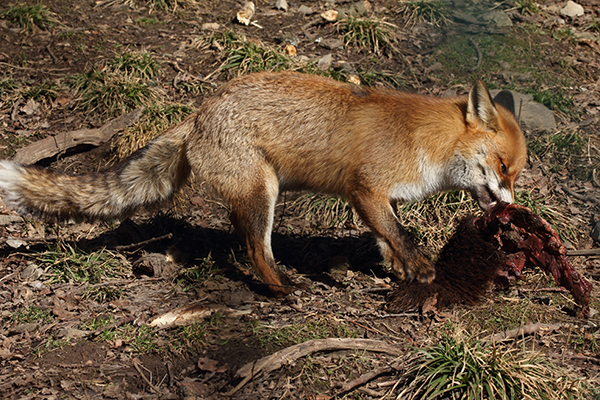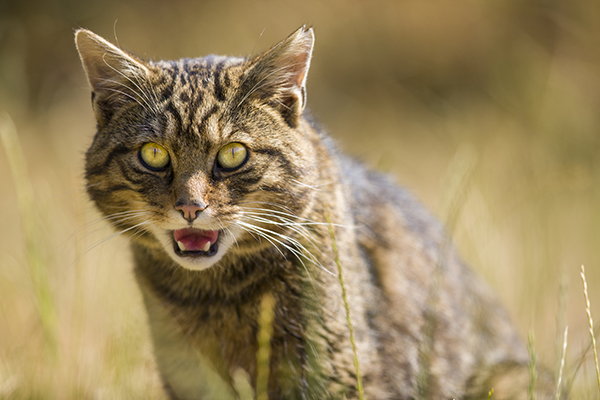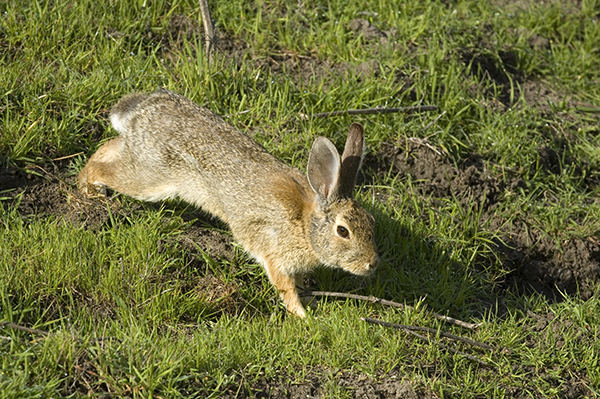Why are we controlling ferals?
Here in the South-West, we live in a Biodiversity Hotspot. This means that we have a very large variety of native species and ecological communities that are only found in this part of Australia, many of which are under threat of extinction from a range of environmental pressures.
In a country with the world’s highest mammal extinction rate, we can help to protect our unique animal and plant species by reducing the number of threats they are facing.
Feral animals have been linked to the decline of a large number of Australian species through predation and competition for resources.
By reducing the populations of feral pests across your bushland you can decrease the impact they have on vulnerable native species.
There are many options for feral control, including trapping, shooting and habitat modification.
One of the most effective broad scale control options for feral control is poison baiting.

Why 1080 baiting?
The two main options for poison baiting available to landholders in WA are 1080 and Pindone.
Pindone is a synthetic poison that will kill both native and non-native species, making it very difficult to reduce the chance of non-target species dying from bait uptake.
1080, also known as sodium fluoroacetate, is a chemical naturally found in almost 40 native plants in Australia. In the South-West, 1080 is found mainly in a group of plants called Gastrolobiums.
Here in the Wheatbelt, we are lucky that most native animal species have evolved alongside these plants and developed a relatively high tolerance for the poison. This means we can lay individual baits containing enough poison to kill a pest animal, whereas most native animals will need to eat several baits to be poisoned.
However, not all native species have the same tolerance to 1080 poison. It is important to be aware of how you are baiting and the impact it may have on the environment, native species and non-target domestic animals.
1080 is also leached out of the baits over time and broken down completely by microbes in the soil, meaning that you won’t have residual 1080 poison sitting in your soil for months or years to come.

Tips for 1080 baiting & reducing non-target poisoning
When using 1080 meat baits to control foxes, you should:
- Bury or tether the baits. Foxes will easily find and dig up baits while non-target native animals are unlikely to find them. This is particularly useful in preventing birds from picking up baits and dropping them near your dam or house and potentially poisoning non-target animals.
- Use no more than five baits per 100ha – this will save you money and stop animals from picking up the baits and burying them in a cache.
- The most effective time of year to bait is during late winter and early spring, when foxes are having young. Baiting at this time of year will have the biggest impact on fox populations.
- Follow up with a second baiting round in late summer and early autumn, when foxes are migrating. While this is not the best time of year to bait, it will reduce the chances of foxes coming in from neighbouring properties and recolonising your property after your spring baiting program.
- Leave your baits out for no longer than two weeks. After two weeks on the ground, 1080 will start to leach out of the bait and degrade. Any baits out on the ground for much longer than two weeks are likely to contain a sub-lethal dose of 1080. If a fox takes a bait with a sub-lethal dose of 1080 they will only get sick and then will never take another bait, making it harder to catch it in the future.
- At the end of each baiting program, pick up any baits that you have laid that weren’t taken and dispose of them by deep burial and/or burning to ensure sub lethal doses of 1080 aren’t available to your neighbourhood foxes.

Rabbit baiting
Baiting for rabbits is much more effective when other food options are rare. There are two types of 1080 oat baits for rabbits:
1. Conventional oat baits
Each individual oat contains a small amount of poison meaning the rabbit needs to eat many oats in order to be poisoned. A period of seven days ‘free-feeding’ (putting out unpoisoned baits) gives the rabbits a chance of getting used to eating oats, before introducing the poisoned oat baits. Failure to free-feed can result in rabbits only taking a few oats, then stopping once they get sick, never to touch another oat again.
2. One-shot oat baits
A small percentage of oats contain enough poison to kill a rabbit, with the remaining oats being unpoisoned. This method does not require freefeeding as the rabbits will keep eating oats until they get one oat with poison in it, which will have enough poison to kill it.
Rabbit bait stations
Rabbit bait stations can significantly reduce the chance of non-target animals taking poisoned baits. They are designed to safely and efficiently feed poisoned oats to feral rabbits. They also save you time and money by protecting the bait from weather and allow easy monitoring of bait uptake.
Once oats have been placed in the station, it is best to leave the oats and rabbits undisturbed for 10 days. This gives the rabbits enough time to become comfortable with the station and learn to eat enough oats for the poison to be effective.
Applying for 1080 baiting permits If you are interested in applying for a 1080 permit, please contact Biodiversity Project Manager Anika Dent for assistance with the application process (Anika Dent, ph: (08) 9670 3104, anika@wheatbeltnrm.org.au). You can also contact your local Biosecurity Officer or your local Shire’s Environment Officer, or Natural Resource Management Officer.
Wheatbelt NRM currently has rabbit bait stations available for sale for $30 each. Please call us directly on (08) 9670 3100.
Tips for your baiting
- Use as many control options at the same time as possible – you will always have some individual animals not taking baits or not going into traps.
- Organise your baiting to line up with your neighbours – this helps reduce the chance of animals from your neighbours’ properties migrating onto your property and vice versa.
- Bait for foxes in spring – this is when they breed and you have the biggest impact on their population.

